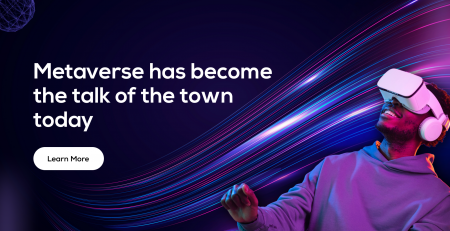Will AI Replace Testers? The Future of Test Automation
Will I lose my job to AI?
Can machines really find bugs better than humans?
Is manual testing already obsolete?
If you’ve asked yourself any of these questions lately, you’re not alone.
In a world where AI-driven software development is moving at lightning speed, test automation is no longer just a buzzword. It’s becoming a core pillar of how modern digital products are shipped faster, smarter, and cheaper.
But here’s the real question: Does this advancement signal the end of manual testers as we know them?
According to a 2024 Deloitte report, over 72% of companies in the US, India, and Australia are actively integrating AI into their quality assurance (QA) pipelines. From writing test cases to self-healing scripts, AI is making things smarter. But not necessarily better, at least, not without the human element.
So,
- Where does this leave the tester?
- Should developers and QA teams fear the future or embrace it?
- Is AI in testing a threat, a tool, or a transformational partner?
In this blog, we’ll explore the truth behind AI in test automation, dissect what it can and cannot replace, and highlight how you, as a tester, developer, or business owner, can adapt to this shift without missing a beat.
You’ll also discover:
- Why AI can’t fully replicate human intelligence in testing
- The future skill set testers need to stay relevant
- How businesses are balancing AI tools with human QA engineers
- Top AI-powered testing tools for 2025
- Real-world insights from Australia, India, and the US markets
Whether you’re building a mobile app in Sydney, running QA for a fintech startup in Bangalore, or scaling DevOps in San Francisco, this blog will help you navigate the real future of test automation.
Let’s break it down.
The Role of Testers– Then vs Now
Before we can predict the future, we need to understand the past.
Software testing has come a long way, from manual checklist-based validation to automated frameworks, and now, to AI-augmented testing systems. But one thing has remained constant: the tester’s responsibility to ensure quality.
Then: The Era of Manual Testing
In the early days, testers manually executed test cases by clicking through UIs, writing detailed bug reports, and verifying each scenario one by one. It was time-consuming, prone to human error, and heavily dependent on domain knowledge.
Despite the challenges, manual testing offered something no machine could replicate: intuition, context-awareness, and creativity.
Now: Automation Took Over (Sort Of)
What is Automation Testing? The use of software tools to execute predefined test cases, improve regression coverage, and speed up release cycles.
With the rise of Selenium, Appium, Cypress, and other automation tools, testers became test engineers, writing scripts instead of executing steps manually. This shift drastically increased speed, coverage, and repeatability.
But even automation has its limits:
- It breaks with UI changes.
- It can’t decide which test cases matter most.
- It lacks contextual judgment, especially for edge cases and exploratory testing.
Enter AI: The New Kid on the QA Block
Unlike automation, AI-powered testing tools don’t just execute instructions they learn from data. With capabilities like:
- Test impact analysis
- Defect prediction using historical trends
- Visual testing using computer vision
- Self-healing test scripts
AI brings a new level of intelligence to the testing process. But does that mean human testers are now redundant?
Not quite.
What AI Brings to the QA Table
AI isn’t here to “replace” testers, it’s here to redefine how testing is done.
Modern AI-based test automation tools are evolving from simple executors to intelligent collaborators that analyze patterns, predict failures, and optimize test coverage. Here’s what they bring to the table:
1. Smarter Test Case Generation
Gone are the days of writing thousands of test cases manually.
AI tools like Testim, Functionize, and Applitools now auto-generate test cases based on user behavior, code changes, and historical defect patterns. This means:
- Faster onboarding for new features
- Reduced risk of missing critical paths
- Continuous validation during development
2. Predictive Defect Analysis
How does AI detect bugs in software testing? AI analyzes past bug history, test case performance, and code commit patterns to predict potential failure zones and prioritize tests accordingly.
Also read: How to get accurate software testing cost estimation?
Using machine learning algorithms, AI can now detect which parts of your codebase are most likely to break, before you even run the tests.
This kind of proactive insight:
- Reduces regression time
- Prioritizes testing focus
- Helps developers fix issues faster
3. Self-Healing Test Scripts
One of the biggest challenges in test automation? Script maintenance. When UI elements change (say, a button’s ID or structure), traditional scripts break. AI fixes this with self-healing capabilities automatically updating selectors based on DOM understanding, historical runs, and visual cues.
4. Test Impact Analysis
Instead of re-running all tests after every change, AI helps teams identify what to test based on what changed.
This reduces:
- Execution time
- Infrastructure costs
- Feedback loop delays
Especially valuable for DevOps teams practicing continuous testing.
So, What Can AI Actually Do Better Than Humans?
- Speed up repetitive regression testing
- Maintain and heal tests over time
- Analyze large data sets to predict failure
- Improve test ROI with fewer resources
But as we’ll explore in the next section, it still can’t test like a human thinks.
Why Human Testers Are Irreplaceable (Yet Evolving)
Despite how advanced AI gets, it still doesn’t “think” the way a human tester does. Yes, machines can scan thousands of lines of code in seconds, but they lack the human perspective that quality assurance truly demands, especially in real-world use cases.
Understanding User Intent and Experience
AI doesn’t know when a checkout flow “feels” clunky, or when a UI design doesn’t match user expectations. But your QA team does.
For instance, while testing an eCommerce app, a tester might recognize that the button placement confuses users, even if technically, the button works. This is where human cognition and empathy matter far more than logic and pattern recognition.
Exploratory Testing Can’t Be Programmed
Real testers ask the “what ifs” that no script AI or otherwise can predict.
- What if a user uploads a 10MB image instead of a 1MB image?
- What happens when the internet drops mid-payment?
- What if multiple users try to edit the same record at once?
These edge cases, chaos tests, and curiosity-driven scenarios can’t be automated because they’re not predefined; they’re discovered.
AI Lacks Domain Expertise
Testers bring context. They understand the business logic behind healthcare platforms, the compliance standards for fintech apps, and the privacy rules in education software. Machines don’t.
Also read: How to develop a Fintech App in 2025?
AI tools might flag an error as low-priority, but a seasoned tester knows when something small can cause a serious usability issue or regulatory non-compliance.
Human Testers Bridge the Gap Between Teams
Today’s testers don’t just report bugs they collaborate with developers, designers, and product owners. They:
- Define acceptance criteria
- Advocate for user experience
- Serve as the voice of the customer
AI doesn’t join stand-ups, write detailed repro steps, or explain why a bug impacts conversions. But your QA engineer does.
The Future? Augmentation, Not Replacement
As testing evolves, so will the tester’s role. We’re moving toward a hybrid model where:
- AI takes care of repetitive, time-consuming tasks
- Testers focus on strategic, high-value analysis
Testers will need to upskill, understand AI models, learn to supervise machine learning outputs, and use intelligent automation tools to amplify their capabilities. Just like the calculator didn’t replace accountants, AI won’t replace testers. It’ll make them more powerful.
Top AI-Powered Test Automation Tools to Watch in 2025
AI in test automation isn’t just theory anymore, it’s actively shaping QA pipelines across fast-scaling startups and enterprise software companies. Here are some AI-based software testing tools that are transforming the industry and setting new standards for productivity, precision, and performance.
1. Testim by Tricentis
Ideal for: Agile teams looking for fast authoring and stable tests
Testim leverages machine learning to:
- Identify locators more reliably
- Auto-update test cases as your app evolves
- Deliver faster feedback loops during CI/CD
With self-healing scripts and dynamic element recognition, it’s a favorite among QA engineers trying to reduce flakiness in UI tests.
2. Applitools Eyes
Ideal for: Visual UI testing across browsers and devices
Applitools uses visual AI to compare UIs the way a human eye would spotting inconsistencies in color, placement, fonts, or rendering issues. It’s a lifesaver when testing responsive designs and brand consistency across web apps.
3. Functionize
Ideal for: Teams embracing cloud testing at scale
Functionize offers NLP-powered test creation, predictive test maintenance, and performance analytics all wrapped in a cloud-based environment. It enables:
- Test creation in plain English
- Smart test selection based on code changes
- Execution in parallel across environments
Think of it as an AI co-pilot for your end-to-end test automation strategy.
4. Mabl
Ideal for: Product teams practicing continuous testing
Mabl blends AI with low-code workflows, helping teams create reliable test flows without deep scripting knowledge. It adapts to app changes, highlights performance regressions, and integrates seamlessly with CI/CD pipelines. Great for teams focused on speed and collaboration.
5. Test.AI
Ideal for: Product managers and test architects exploring AI bots for testing
This tool uses bots trained with deep learning to mimic user behavior. It’s particularly effective in mobile app testing, where gestures, transitions, and edge cases vary widely.
While still evolving, it reflects how AI will eventually mimic real user interactions more accurately than rigid scripts.
Bonus Mention: Tools like Sauce Labs, Perfecto, and Katalon are also incorporating AI features for smarter test orchestration and execution.
How to Choose the Right AI Testing Tool?
When evaluating AI-based QA platforms, consider:
- Your tech stack (React Native? Flutter? Web?)
- Budget vs scalability
- Integration with your DevOps pipeline
- The learning curve for your team
Remember, the goal isn’t just automation, it’s intelligent automation that evolves with your product and team needs.
Will AI Replace Testers Completely? The Final Verdict
Here’s the truth: AI will not replace testers, but testers who embrace AI will replace those who don’t.
As businesses scale across Australia, India, and the US, software teams are under constant pressure to deliver faster without compromising quality. In this fast-moving ecosystem, AI acts as a force multiplier, not a replacement.
What AI Can’t Do (Yet)
While AI test automation tools have advanced rapidly, they still lack:
- Emotional intelligence to understand UX nuances
- Contextual thinking to navigate business logic
- Creative problem-solving is required in exploratory testing
A self-healing script can detect broken UI paths, but it can’t explain why a feature confuses users or why your conversion rate is dipping after a release.
What Human Testers Need to Do Next
The role of testers is evolving from execution to strategy. Testers are now:
- Overseeing AI-powered test cycles
- Training algorithms with relevant data
- Making intelligent decisions with the help of insights generated by automation tools
Think of it like the shift from manual cars to self-driving ones. The human driver still matters, but now they’re monitoring, guiding, and making smarter decisions based on technology.
The Global Shift: Australia, India, and the US Lead the Way
Enterprises in Australia are doubling down on AI testing to support agile product cycles. India’s tech scene is upskilling QA engineers with AI and ML certifications, while US-based companies are investing heavily in AI-driven DevOps pipelines to reduce time-to-market.
Across all regions, one pattern is clear: AI is here to assist, not replace.
Final Thoughts
So, will AI replace testers? No.
Will it change everything about testing as we know it? Absolutely.
For testers, developers, and product owners, the future lies in collaboration, not competition, with AI. The smartest move you can make today is to embrace intelligent automation, sharpen your analytical skills, and lead the future of quality assurance with innovation.
Want to build scalable, AI-powered QA solutions tailored to your product? Let’s talk. At DianApps, we help businesses future-proof their testing strategy—without compromising on human intelligence.




